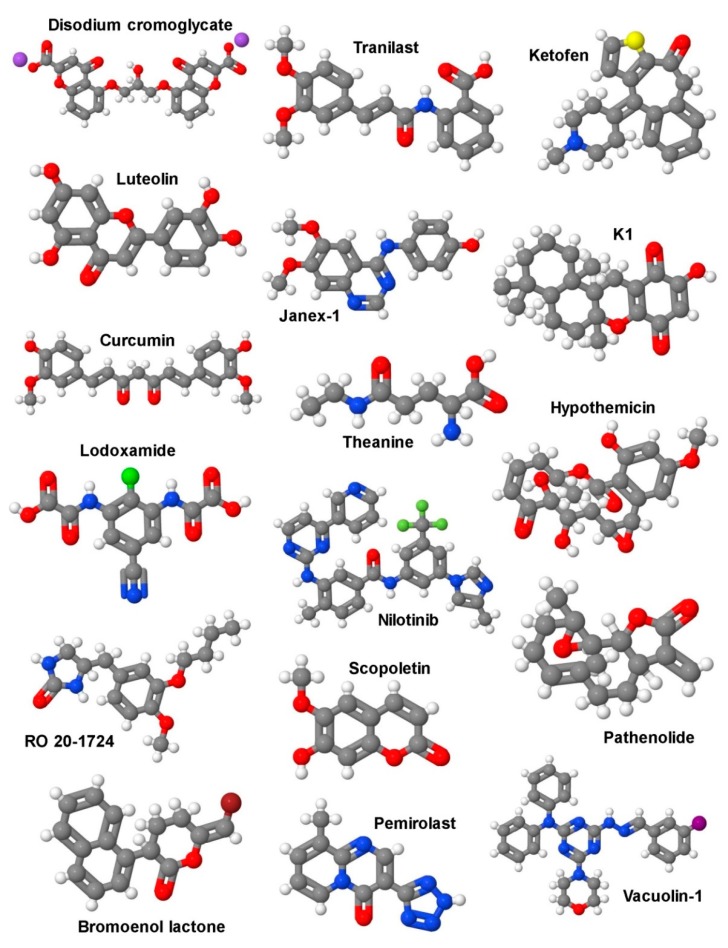Figure 4.
Naturally occurring and synthetic mast cell stabilizers with highly variant structures. Interestingly, some of these drugs, such as Tranilast, Luteolin, Curcumin, Theanine, Nilotinib, and others showed highly beneficial effects in experimental hepatic fibrosis [62]. Most of their activities are attributed to their antioxidant activity, capacity to prevent hepatic infiltration with circulating blood cells, potential to target pro-inflammatory and/or pro-fibrotic signaling pathways, or to influence extracellular matrix generation or turnover. However, none of these substances have been tested systematically regarding the modulation of mast cell stability in models of hepatic fibrogenesis. All structure images were prepared with Jmol (http://jmol.sourceforge.net/) using the following PubChem Compound Identification (CID) numbers: Bromoenol lactone (5940264), Curcumin (969516), disodium cromoglycate (27503), Hypothemicin (9929643), Janex-1 (3794), K1 (25211416), Ketofen (3827), Lodoxamide (44564), Luteolin (5280445), Nilotinib (644241), Pathenolide (7251185), Pemirolast (57697), RO 20-1724 (5087), Scopoletin (5280460), Theanine (439378), Tranilast (5282230), Vacuolin-1 (9661141). More details about the structure and functions of representative MC stabilizers can be found elsewhere [178].

